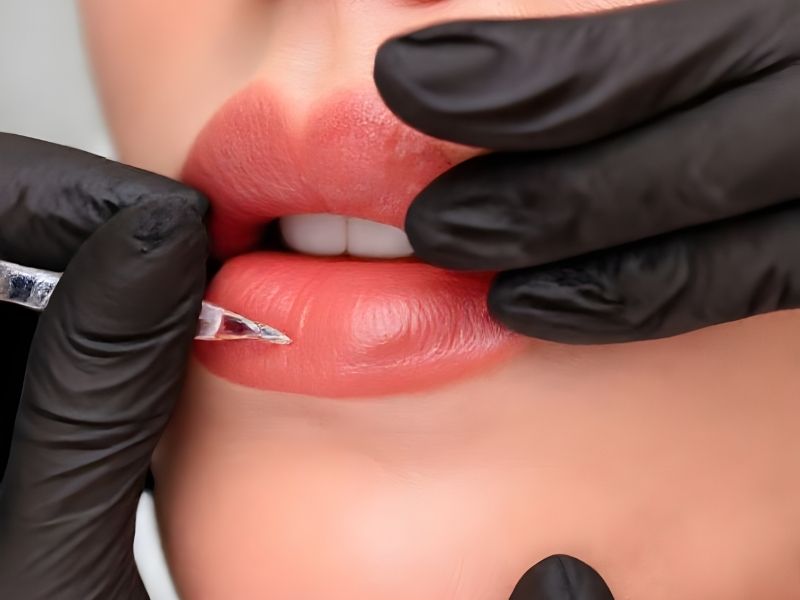Lip fillers performed in a sterile environment and using natural filler materials do not cause any side effects. However, to maintain the desired effect, the procedure should be repeated at regular intervals.
Fat tissue is another type of filler material used in lip augmentation, derived from the patient’s own body fat. The desired fullness in the lips is achieved by injecting fat tissue, fascia tissue, or a tissue cocktail obtained from the patient through lipoinjection. Among these, autologous fat tissue (taken directly from the patient) is the most preferred method. The fat is usually harvested from the inner thigh or abdominal area.
Lip augmentation performed with fat injection does not trigger any foreign body reaction since the material comes from the patient’s own body, and it also leaves no visible scars. During the procedure, a small amount of fat is injected between the muscle tissues to achieve the desired volume, while fine lines around the lips are also smoothed out.
Since part of the injected fat tissue can be naturally absorbed by the body over time, this procedure is typically performed in 2 to 3 sessions to achieve a more permanent and stable result.
What Should Be the Ideal Lip Structure?
Thin Lips
Thin lips can be effectively enhanced and volumized using hyaluronic acid fillers. The procedure is quick, painless, and typically completed within five minutes. The results last for 6 to 12 months, depending on the individual’s metabolism and filler type. During the session, the doctor and the patient can work collaboratively to achieve the desired lip shape and fullness in real time.
In addition, fat tissue injection, dermal grafts, or silicone-like synthetic materials can be used for long-lasting or permanent results. These methods involve minor surgical procedures and are usually completed in about 30 minutes.









